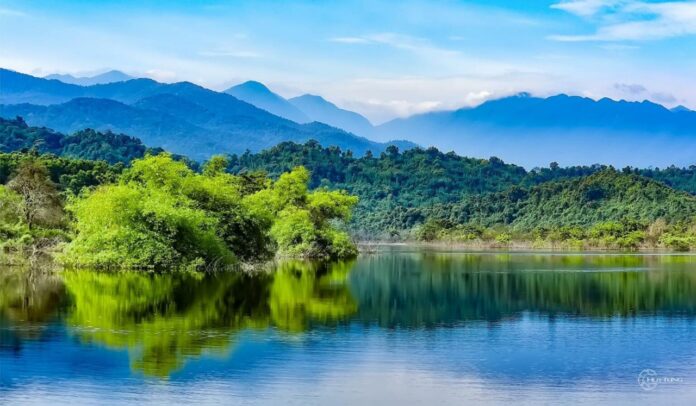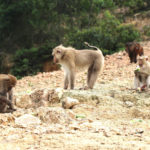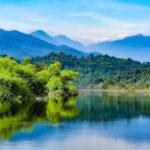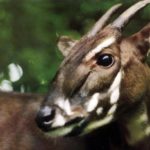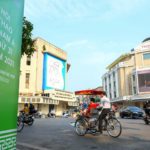Nestled in the north-central region of Vietnam, Vu Quang is a secluded haven for the country’s rare bovine species and one of its least explored national parks. Often overlooked by travelers, Vu Quang National Park offers a tranquil escape for nature enthusiasts and those seeking off-the-beaten-path experiences. Venturing into this remote area provides an opportunity to glimpse the elusive saola or giant muntjac, making it a nature lover’s dream.
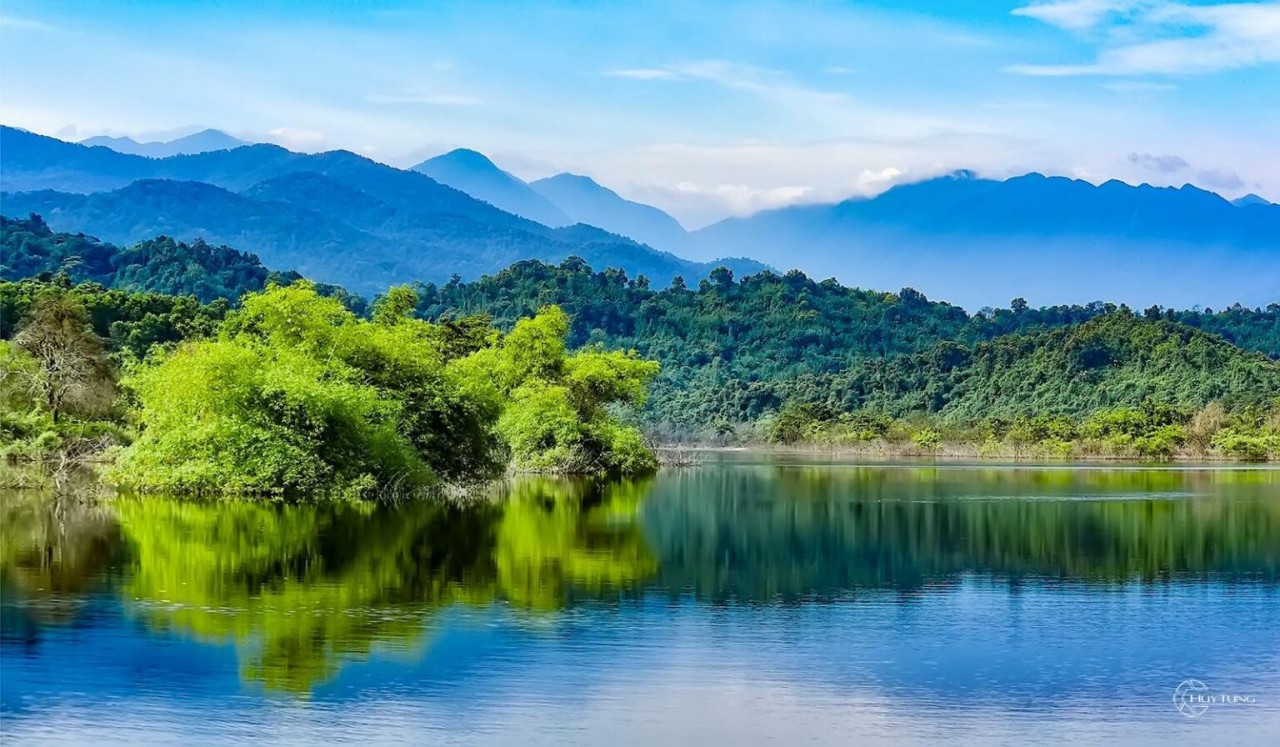 |
| The mountains majestically reflect on the serene lake. Photo: Vu Quang National Park |
Located in Ha Tinh Province, Vu Quang National Park is a wildlife sanctuary, boasting a predominantly lowland forest ecosystem. Ha Tinh City, approximately an hour’s drive away, is the nearest large urban area. The park’s remote setting and abundant nature make it an ideal destination for those seeking a peaceful retreat.
Vu Quang holds significant importance as a biodiversity hotspot and nature reserve. Situated within the Truong Son mountain range, it was initially established as a nature reserve and later upgraded to a national park in 2002. Historically, it served as the site of the Phan Dinh Phung Revolutionary Base, making it a place of cultural and historical significance for Vietnam.
 |
| The park, nestled within the Truong Son mountain range, is vital for preserving the region’s biodiversity. Photo: Christopher Newsom |
The park boasts wild and majestic landscapes, including the breathtaking Thang Day Waterfall, Cong Waterfall, Nam Cham Waterfall, Rao Rong Stream, and the serene Ngan Truoi Lake. In addition, countless other waterfalls, rocky beaches, and crystal-clear lakes create a captivating natural paradise.
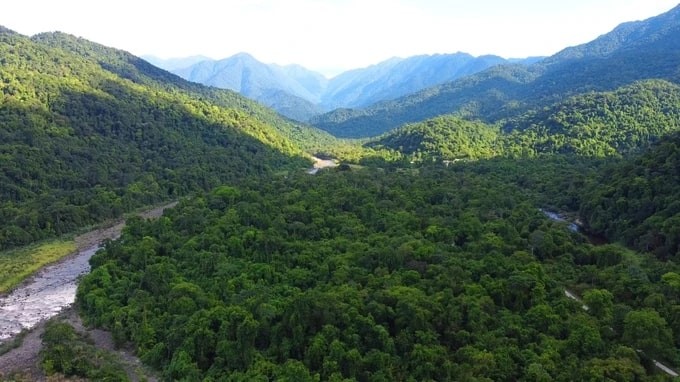 |
| A serene corner of Vu Quang National Park. Photo: Sai Gon Giai Phong |
Vu Quang National Park offers a back-to-nature experience with minimal infrastructure. The primary activity for visitors is hiking, with mountains averaging 2,624 feet (800 meters) in height. The lower altitude makes most of the trails manageable for hikers of all levels, from novice to experienced.
The park also serves as an ideal environment for scientific research and exploration. Domestic and international experts and scientists find Vu Quang a valuable setting for their investigations and a place to share knowledge and experiences.
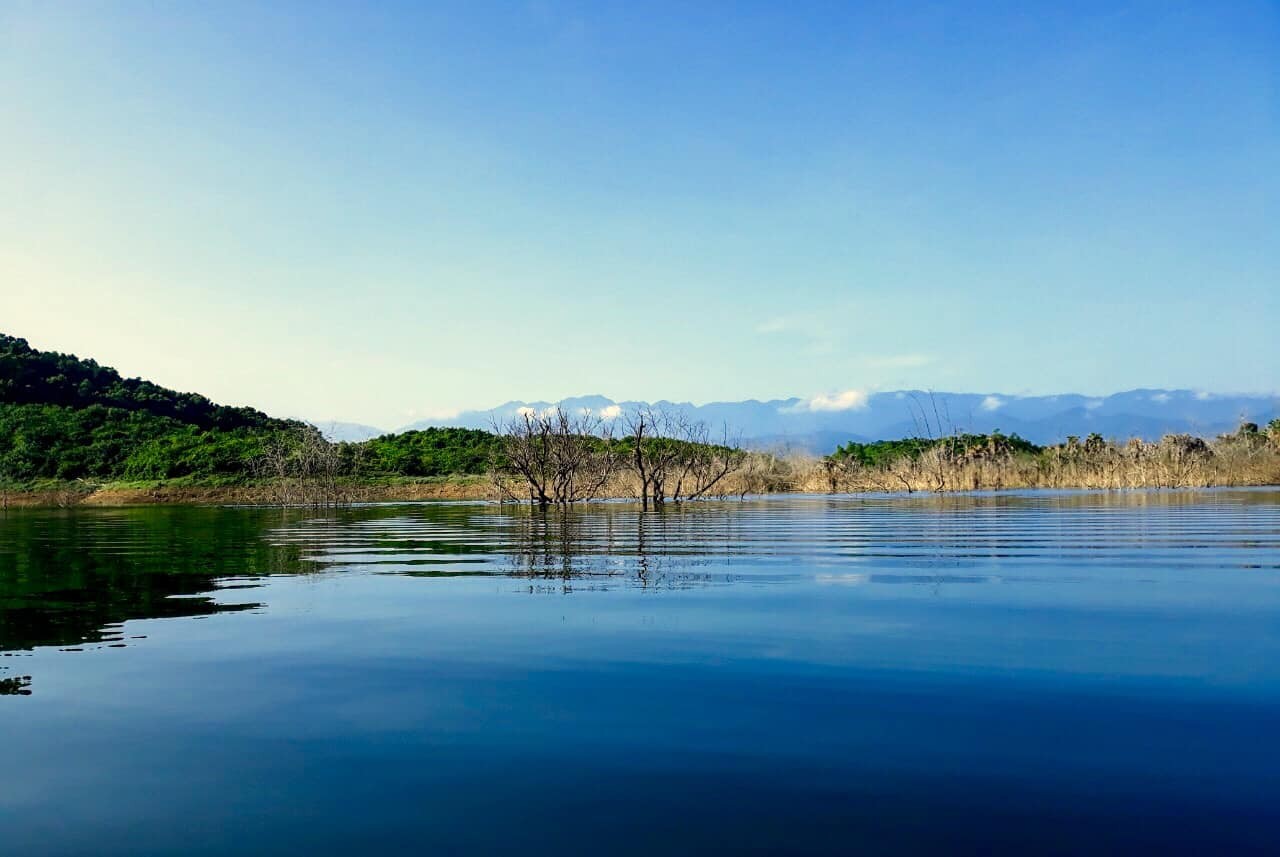 |
| The tranquil waters of the lake reflect the surrounding nature. Photo: Vu Quang National Park |
Within the park, a population of ancient and rare Po Mu trees, some dating back 800 to 1,000 years, has been discovered and preserved. Among them stands a majestic giant with a base diameter of over 2.2 meters and a height of approximately 30 meters, its canopy spreading wide. The park is also home to countless other rare and ancient forest specimens, each with their own fascinating stories to tell.
Vu Quang National Park is a treasure trove of biodiversity, housing many endangered and rare plants and animals listed in the IUCN Red Book and Vietnam Red Book. It is a sanctuary for conservation, protecting valuable genetic resources and endangered species, including the famous saola and giant muntjac.
These bovine species are the park’s most renowned residents. The saola, sometimes referred to as the Asian unicorn, is one of the world’s rarest mammals. Visitors are drawn to Vu Quang, hoping to catch a glimpse of this elusive creature in its natural habitat within the Annamite Mountain Range.
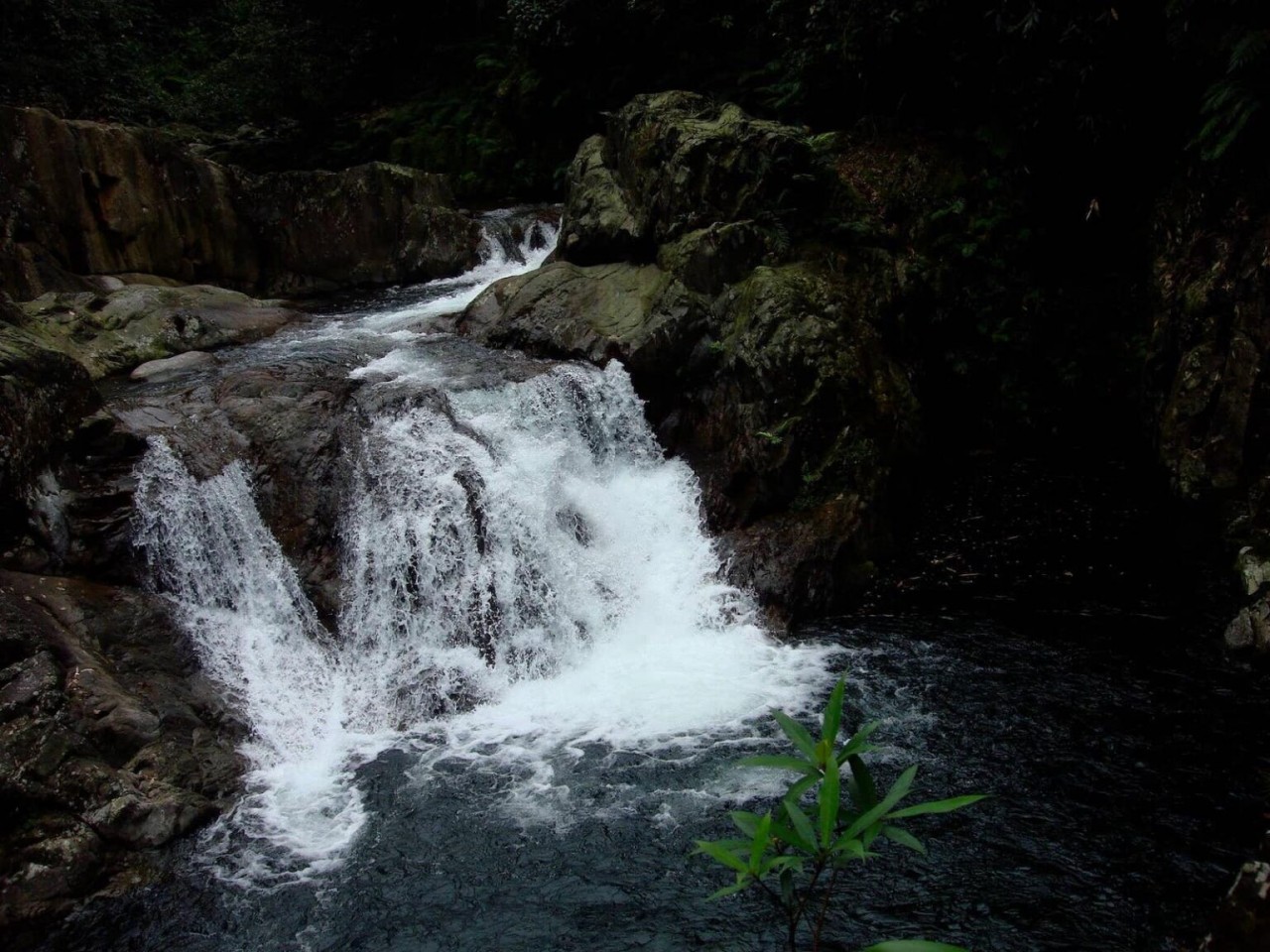 |
| A breathtaking waterfall within the park. Photo: Vu Quang National Park |
In addition to the famous bovines, Vu Quang is home to various species of deer and antelope. These recently discovered animals are locally named, reflecting their unique appearances, such as the Quang Khem, Mangden, and Linh Duong. The park also hosts several fish species, slow loris, and the distinctive warty pig.
With its lush forests, Vu Quang is a sanctuary for an incredible variety of plant life. The sheer number of plant species is astounding, and new discoveries are still being made, adding to the park’s botanical richness. It is a botanist’s paradise, offering the excitement of potential new findings with each exploration.
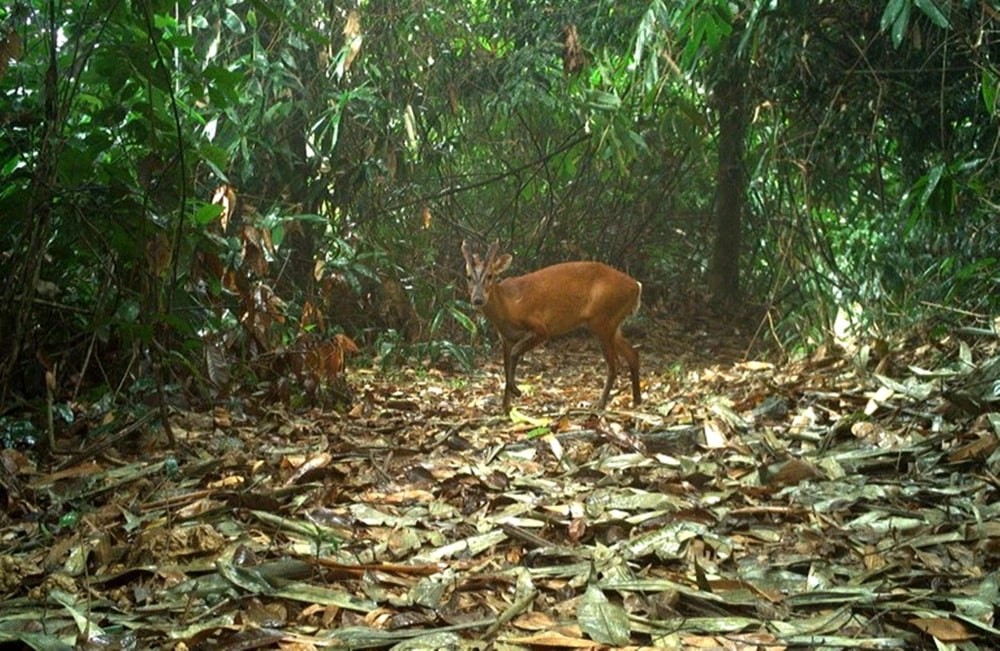 |
| The diverse wildlife of Vu Quang includes various species of deer and antelope. Photo: Sai Gon Giai Phong |
Vu Quang National Park experiences two distinct seasons throughout the year: dry and wet. The dry season, from late October to March, offers ideal conditions for hiking and boating, as the trails are dry and the weather is pleasant. The wet season, from April to September, brings cooler temperatures and heavier rainfall, making outdoor activities more challenging.
However, even during the wet season, the park remains open, providing a peaceful retreat for those seeking solace in nature. Visitors can still enjoy the streams, lakes, and rivers that dot the landscape, offering a refreshing escape from the heat and humidity.
Macaques Flourish in Vietnam’s Pristine National Park: A Story of Ecological Rehabilitation
Dozens of monkeys have seamlessly acclimatized to their new natural habitat on an island within Vu Quang National Park, located in Ha Tinh Province, north-central Vietnam. This successful release and subsequent adaptation is a testament to the effective rehabilitation efforts undertaken within the park’s premises.

